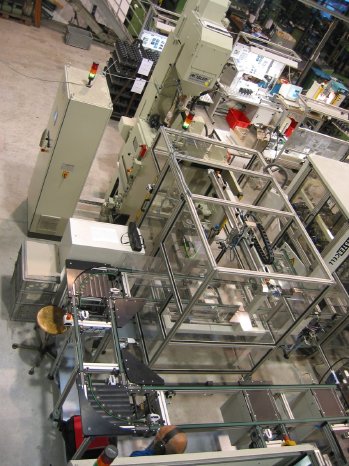There are two reasons why the automotive industry is constantly looking for alternative raw materials: on the one hand, they are faced with demands for more fuel-efficient cars that produce fewer emissions, on the other there are the increasing cost pressures. Thermoset (Duroplast) mouldings appear to allow the industry to kill both of these birds with one plastic – which is why these mouldings are increasingly used for demanding applications, for example as functionally integrated components in the engine compartments of motor cars. One of these applications is the throttle housing made from bulk-moulding compound polyester (BMC) developed by the Christophery Kunststofftechnik GmbH, an enterprise (part of the Poschmann Union) specialized on the treatment of thermosets such as thermoplasts and Duroplasts which is based in the German town of Brilon. Duroplast has been developed as a metal substitute: it is highly resistant against high and low temperatures (range: -40 to 150 °C) as well as chemicals, provides a high degree of design freedom even for complex geometries and has excellent insulating properties that prevent the formation of ice on the throttle flap, even without the application of any additional heat. Duroplast components are also far lighter than their aluminium counterparts and provide palpable economic benefits through lower raw material costs and longer tool lives (four to five times those of aluminium components).
High levels of dimensional accuracy and surface quality
For the production of these throttle housings, Christophery uses customized and fully automatic polyset injection-moulding machines from Krauss Maffei. Due to their high levels of dimensional accuracy, these injection-moulded components have a very narrow band of tolerances and therefore require very little or no subsequent machining. “The ventilation techniques we use during the moulding process and the inserts in the tool, however, produce small secondary burrs in dimensions between 5 µ and 15 µ,” explains Rainer Schmidt, responsible for Project Management and Development at Christophery’s plant. “We must remove these in order to ensure the high quality and full functionality of the housings.” This is where the deflashing machines come in.
Deflashing to meet extremely rigorous specifications
But Christophery expects its deflashing to deliver even more. Components must be totally dust-free, and the treatment process needs to be fully automatic. Short cycle times are also a criteria. The Project Manager explains: “Since Rösler is the leading manufacturer of blasting systems for thermosets and we already have such facilities in use, we asked them whether they would be able to provide us with a solution for this task, too“.
This solution came in the shape of a WS 1200-S1 deflashing machine from Rösler Switzerland which is integrated into the production line as a manufacturing cell. The machine features a swing-table and two stations. This concept allows the manufacturer to shorten his handling times considerably, since deflashing can take place on one side of the working chamber while the machine is charged and discharged on the other.
Excellent results and spare capacities
The deflashing process immediately follows the injection-moulding of the throttle housing. The workpieces are supplied on component-carrier plates. A robot picks up four of those at a time, placing them on the two satellites in specifically designed receivers. The deflashing is performed by a granulate material that has been specifically designed for the material of the throttle and its geometry. These pellets are accelerated and blasted at the components by a top-mounted, high-power spinning wheel (4 kW) which can be vertically moved. The blasting speed of the spinning wheel is continuously adjustable to control the intensity of the process.
During the deflashing process, the workpiece receivers are continuously rotating, ensuring uniform and consistent results on all sides. The machine has also been equipped with a range of functions that are designed to prevent dust from contaminating the deflashed throttle housings, including an anti-static spray function. Any deflashing agent that may have stuck to the housings after the end of the process is blown off by the air blasts from the motion of the spinning wheel and additional nozzles. The deflashing agent is processed by a two-stage vibration screening system and a bucket conveyor system with downstream cascade separator.
“This machine allows us to obtain excellent levels of surface quality,” Rainer Schmidt concludes. “And it does this in a cycle time which is shorter than the injection-moulding cycle. This enables us to keep spare capacities.”
Contact: Rösler Schweiz AG, Staffelbachstrasse 189, 5054 Kirchleerau, Switzerland, Mr. Marco Furter, Telefon +41 62 7385514, Fax +41 62 7385580
m.furter@rosler.ch
- - -
We would be grateful to receive a copy of any publication featuring content from this release. Thank you.
Editorial Contacts:
SCHULZ. PRESSE. TEXT.
Doris Schulz
Martin-Luther-Straße 39
70825 Korntal, Germany
Telefon +49 711 854085
Fax +49 711 815895
ds@pressetextschulz.de
www.schulzpressetext.de


